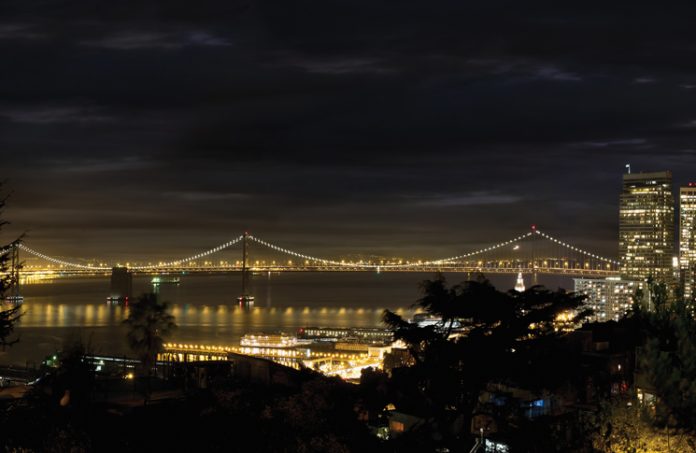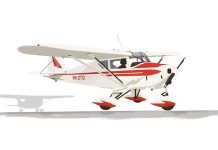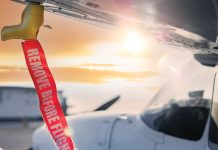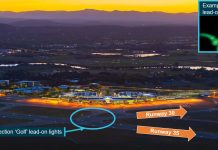Robert Cassidy remembers a close call of a kind that has killed vastly more experienced pilots than he was at the time
From September 1984 to August 1985, I was flying for an aeroplane dealership that also served as a flying school, aircraft charter operator and what is termed as a fixed base operation (FBO) at San Carlos Airport, about 15 km south of San Francisco International Airport (SFO). I was employed as the senior charter pilot.
I left the US Army in March 1982 and, by 31 December 1982, had accumulated the minimum required 1,500 hours to earn my FAA airline transport pilot licence, with a Cessna Citation type rating. Back in those days, I would be lucky to fly 500 hours per year. By October 1984, I was 30 years old and doing a lot of FAR Part 135 charter flying. I held FAA Part 135 approval certificates (we called them Part 135 letters – sometimes they were) for 12 single- and multi-engine aeroplanes and a Bell 206 Jet Ranger helicopter. Often, I would fly for more than one operator, in the same day, to make ends meet. I guess I had about 2,800 hours total flying experience – not a lot, but vastly more experience than the young men who went off to war to fight the Germans and Japanese during World War II.
I always treated every aircraft I flew as if I owned it. One that I was flying belonged to well-known San Francisco TV news anchor Dave McElhatton – a beautiful Piper Aerostar PA60-602P with mid‑fuselage mounted wings and 2 turbocharged TIO-540 Lycoming engines that develop 290hp. It climbed at nearly 2,000 fpm! It had a sleek NACA 64A212 wing design, used in Lear Jets. And it cruised at 217 knots.
Fast forward to a night-time charter that I was assigned, from San Carlos to SFO to pick up a United Airlines maintenance crew, aircraft parts and tools, then fly them to Boise, Idaho. Because I always treated any aircraft I fly as if it were my own, I would do a post-flight, clean the cabin, lay the seat belts one across the other, clean the windscreens and set the cockpit up for the next departure, before tucking it in for the night. I flew this aircraft 99.9 per cent of the time. Because San Carlos had a fairly short runway (800 m) and the 602P was runway hungry, consuming 550 m take-off distance, I would make a short field take-off, standing on the brakes, getting the engines spooled up and power settings equalised, before I would release the brakes.
As hinted above, it was a night-time take-off. The aeroplane launched like a rocket from the departure end of the runway, egregiously nose high – I was shoving hard with my left arm to get the nose down to a normal climb, reaching down to the lower right centre pedestal, feeling in the dark for a tiny toggle switch for Elevator Trim On/OFF. The damned thing was set full up elevator and the switch was off. Someone was trying to kill me! That was not how I left the aircraft. My index finger and thumb found the switch and flipped it on and trimmed nose down while I eased off forward pressure on the yoke. I was doing this in the darkened cockpit, while peeking at the instruments and over the top of the padded instrument panel at SFO Airport lights, as my altitude rapidly approached the 1,500‑feet no-go zone above me.
It was the worst possible scenario – full fuel, full nose-up trim, a tiny toggle switch for electric trim that was off and not where I would have installed it, in a dark cockpit and a night take‑off, with a very steep angle of climb, probably approaching 2,000 fpm. Yet, I recovered, without stalling and without violating San Francisco airspace. Boy, oh boy! Was I pissed off. I laid into the chief pilot, the next day for whoever deliberately set full nose-up trim. He reminded me it was not my personal aeroplane. Yet, of all the people there, I flew it almost exclusively and had made others aware the aircraft was prepared for that evening’s charter flight. I should have done a thorough pre-flight and not taken for granted that nobody had been out for a play or cockpit familiarisation in the aircraft. I didn’t own it, after all.
I should have done a thorough pre-flight and not taken for granted that nobody had been out for a play or cockpit familiarisation.
The owner of the business preferred me to be his chief pilot because I brought him business and kept the customers happy. He told me he would let the current chief pilot go when he returned from vacation and offer me the chief pilot position, which I accepted. But, like a scene from a play, the chief pilot was just behind the room partition and overheard our conversation. He terminated my employment while the owner was away on vacation.
I remembered that flight when I heard with great sadness about the fatal crash of a single-engine Siai-Marchetti 1019, piloted by the legendary retired US Navy aviator Dale Snodgrass, on 24 July 2021. Why had we had such different outcomes, him with all his fast jet hours in a simple single-engine aeroplane and youthful me flying a high-performance sophisticated multi-engine aeroplane, at night? Was the fact that I was 42 years younger than him, at the time of my incident the difference, despite his greater experience? I want to know why.





